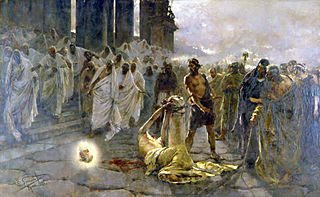1 Timothy 1-6
This lesson was easy enough to prepare once I figured out what to do. There were several tiny, mini lessons in this text. I could have pulled one out and made a full lesson on one, but none of them were really long enough to spend a full lesson on, and I did feel like different topics would appeal to different students. I needed a method to cover a variety of material without me lecturing. The manual was unhelpful — I wish they would do fewer lessons that talk “about” the scriptures and more lessons that require kids to get “in” the scriptures. I realize that most kids think the scriptures are boring, but they aren’t. All they have to do is look inside to see it — we teachers can help them do that.
I split 2 Timothy into what I felt were major themes — six, in my planning. I wrote each topic on the board. Then I asked a student to group her classmates as they came in, and so I made teams who would create a “product” regarding their topic.
After group assignments, I told students they would have 3 minutes to read over the text individually and silently to find out what Paul taught about each topic. After 3 minutes, groups of students would have 8 minutes to create a product, either a poster, story, poem, chart, or interpretive dance (haha) about their assignment. I did interpretive dance for the laughs, but I knew no one would choose it. One group did do a 45 second skit, however. Another used my laptop to make a meme.
The topics I used were
- money
- women
- the atonement
- prayer
- false teachings
- bishops and deacons
This worked out well. Students did a brief presentation, and on a few topics I helped them go into a little more depth. I wrapped up with a brief biography of Timothy, explaining that he was a young man called to be over a difficult people. I read to students the advice that Paul gives Timothy in chapter 4 verses 12-16. This advice about diligent study and being an example is important for our personal salvation and to those we have stewardship over. I also gave students a teaser about 2 Timothy 1:7–8, which happens to be one of my favorite scriptures.
This turned out to be a really great lesson. The spirit was there and I could tell several of them were touched.
If you do this activity, you may not be able to give students just 3 minutes to look up information if they haven’t already done the reading. If your students don’t read 1 Timothy before class, you may want to give them a little more time to find the information and/or cut out a topic or two to shave off time. This activity did go faster than I expected, and I had about 10-12 minutes at the end of class to summarize and tease for the next chapter. We let out a little early. Never hear a complaint about that.
2 Timothy 1-4
This was another easy lesson to prepare. I’m wondering if I should be working harder…. but the material is easy, just like at the end of Old Testament. It makes me sad that so many teachers skip or have to rush through this stuff.
At the beginning of the year I put a copy of Recognizing the Promptings of the Holy Ghost in each student’s binder. It’s a handout based on a talk by Elder Groberg that describes how you feel (and don’t feel) when you feel the holy ghost. We spent most of class talking about these things.
Next I gave students 2-3 minutes to look over chapters 2 and 3 and to tell me what they underlined from last night’s reading. This did not go super well, but it was okay. I let students volunteer things they underlined, when I probably should have left time for each student to share. There just wasn’t time, and I don’t think we rushed, but not everyone got to talk.
I had my 3 minute conclusion ready to go, so I wrapped up with chapter four. What would you say if you knew you were going to die? The Bible Dictionary says this letter was written shortly before the martyrdom of Paul and contains some of his last words. His words in verses 7-8 (I have fought a good fight) are great. May we all be able to say the same when we leave this life. I hope I can.
NOTE: I did a little bit of preparatory reading on 2 Timothy online linked to from Feast Upon the Word that had some totally different information on the date 2 Timothy was written. I didn’t know the guy’s source, and so I just stuck with the Bible Dictionary. It could be wrong, but I do the best I can. I just can’t do original research or source ranking for a single 3 minute conclusion.
Image source: Decapitación de San Pablo (The Beheading of Saint Paul) by Enrique Simonet This work is in the public domain in those countries with a copyright term of life of the author plus 80 years or less.


